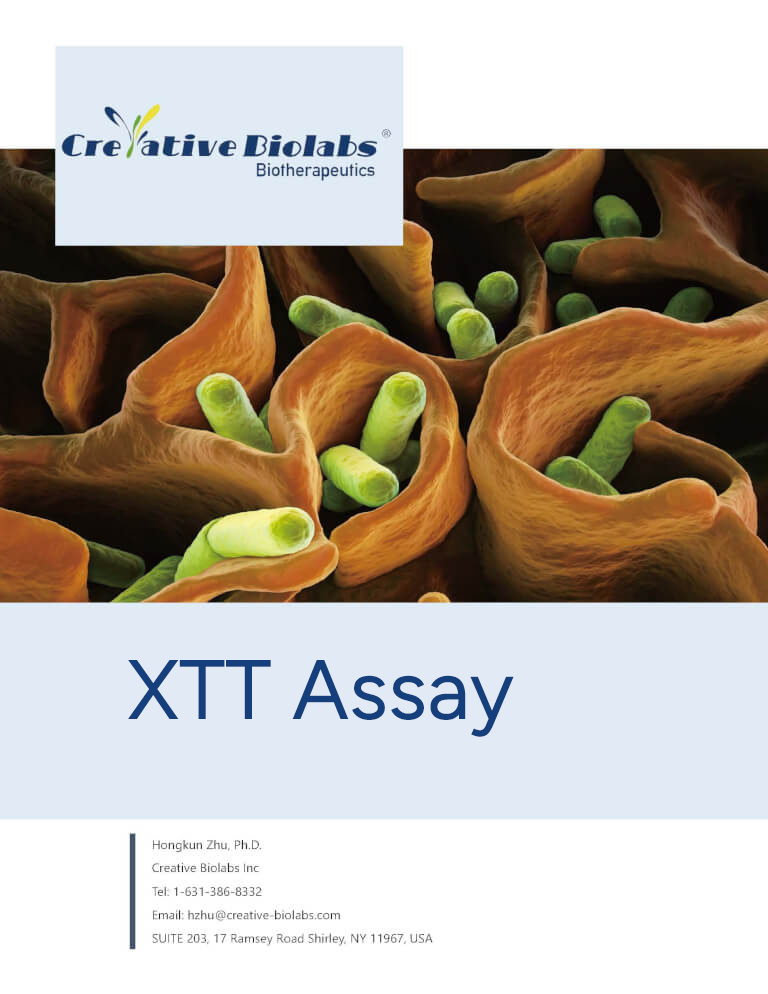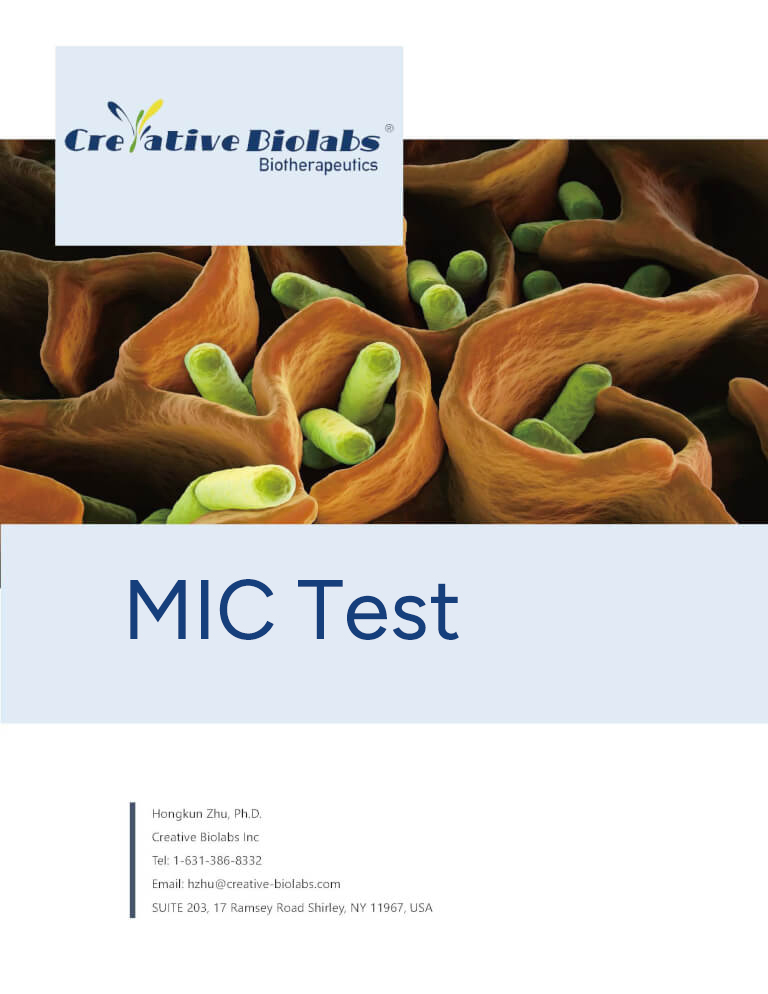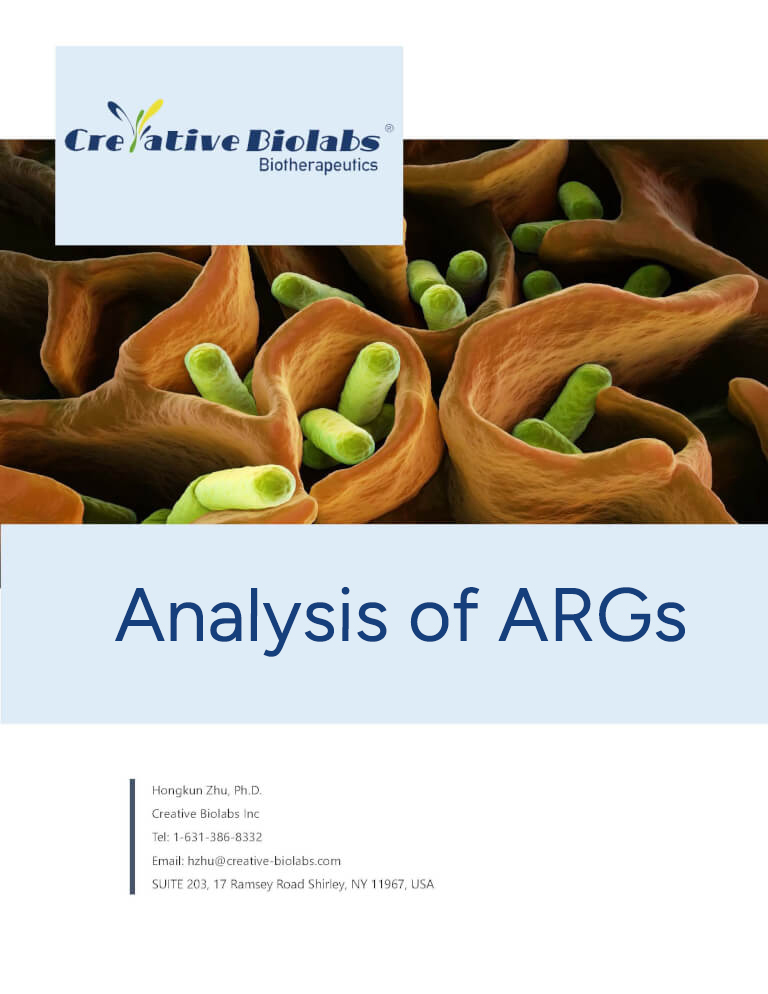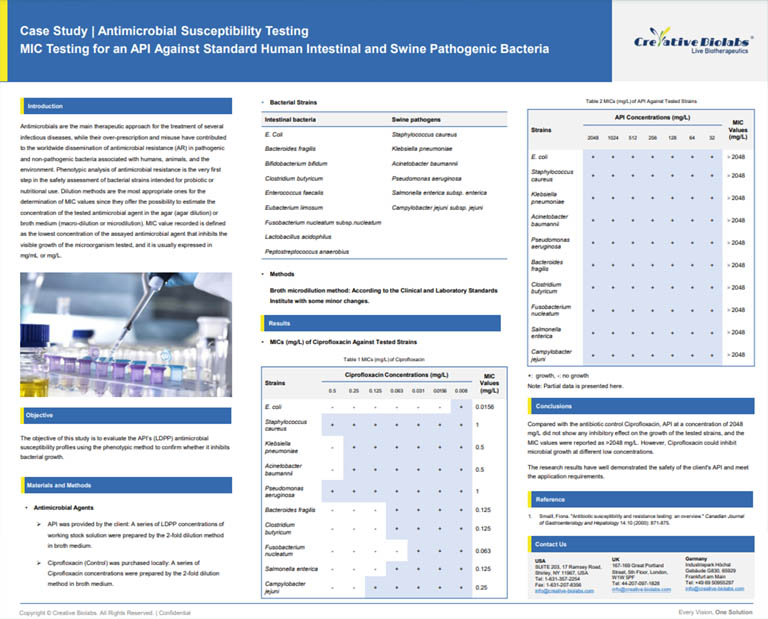Antimicrobial Susceptibility Test Service for Live Biotherapeutic Products
Background Services Report Case Study FAQ's
Creative Biolabs has a team of professional scientists who can provide a variety of customized antibiotic susceptibility/resistance testing services to our customers. We guarantee the best results for our customers all over the world.
Background

Live bacterial therapies have emerged as a new class of regulatory approaches for the treatment of various human and animal diseases. Preliminary studies have shown that most next generation probiotics (NGPs) are sensitive to certain types of antibiotics and cannot be easily eliminated if they cause harm to the host. Moreover, the antibiotic resistance of these NGPs may subsequently spread to specific pathogenic microorganisms. Food or feed microorganisms used as probiotics are being closely monitored for their potential involvement in the spread of antimicrobial resistance. In Europe, if an organism intended to be added to food or feed is declared safe for human and animal consumption and has received a qualified presumed safety (QPS) status from the European Food Safety Authority (EFSA), the absence of acquired genes that confer resistance to clinically relevant antimicrobials must be determined.
Antimicrobial Susceptibility Testing Services
Drug susceptibility and resistance can be assessed by different methods. In vitro methods mainly include disk AGAR diffusion and dilution methods. In the second technique, the tested microorganisms are exposed to broth or agar containing increasing concentrations of antibiotics. Nowadays, we have developed efficient protocols for antibiotic susceptibility/resistance testing. We can also conduct custom in vitro safety studies to meet other requirements of our clients.
Method
Serial twofold dilution.
Testing Standards
-
The European Committee on Antimicrobial Susceptibility Testing (EUCAST).
-
The Clinical and Laboratory Standard Institute (CLSI).
-
ISO standard or similar.
Antimicrobial Agent
Antibiotics (most commercially available agents for research use), other substances/compounds that may have antibacterial properties.
Organisms
Cultivable anaerobic or aerobic pure cultures, e.g. microorganisms used as feed or food additives, or for research.
Cultures can be submitted either in glycerol tubes or freeze-dried.
Susceptibility Interpretation
The results will be analyzed using the microbiological cut-off values based on published data.
Lead Time
4-8 weeks.
Pricing
The charge is based on the difficulty of culturing microorganisms and the type and quantity of antimicrbial agents.
Special Submission Instructions
Isolates submitted to Creative Biolabs will be checked for purity, and identified (if necessary) before antimicrobial testing is done.
Testing Standards
The Clinical and Laboratory Standard Institute (CLSI)
Organisms
Cultivable anaerobic or aerobic pure cultures, e.g. microorganisms used as feed or food additives, or for research. Cultures can be submitted either in glycerol tubes or freeze-dried.
Lead Time
4-8 weeks.
Pricing
The charge is based on the difficulty of culturing microorganisms and the type and quantity of antimicrbial agents.
-
Antimicrobial Resistance (AMR) Genes
Method (1)
Metagenomics sequencing
Results
-
Antibiotic resistance genes (ARGs) identification in the sample
-
Genetic location of ARGs
-
Abundance of ARGs in samples
-
The multidrug resistance gene cluster
-
Host range of ARGs
Sample Requirements
Genomic DNA
Method (2)
High-throughput quantitative PCR (The smart-chip system)
Results
-
Occurrence and Abundance of ARGs
-
Correlation of ARGs with Bacterial Community
Sample Requirements
-
Genomic DNA
-
Concentration >10 ng/µL
Lead Time
Quantity of chips ≤ 3, 4-6 weeks. For each additional chip, 4 days will be added.
Download a Sample Report
Case Study

Fig.2 Dose-response assays of drug against bacteria biofilms.
The client provided us with antimicrobial agents and concentrations, we performed an XTT assay to detect the inhibitory effect of the drug on bacteria biofilm formation.
Creative Biolabs is pleased to share our cutting-edge technology and extensive expertise in antimicrobial susceptibility testing with our customers. Contact us to discuss your project and experience the great value of our services.
Frequently Asked Questions
Q. What are the commonly used methods of susceptibility testing?
A. Broth dilution tests, Antimicrobial gradient method, Disk diffusion test, and Automated instrument systems (Vitek 2 System).
Q. How to select the drugs for routine testing?
Q. How to interpret the susceptibility test results?
A. Susceptibility test results are best interpreted by reference to expert sources, such as CLSI and EFSA, which publish criteria for MICs interpretation of all relevant antibiotics for most bacterial genera.
For Research Use Only. Not intended for use in
food manufacturing or medical procedures (diagnostics or therapeutics). Do Not Use in Humans.
Related Services











